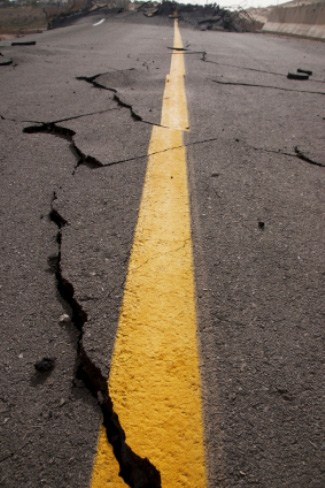California Earthquake Insurance
Homeowners in relentlessly shaky California now have more options when it comes to earthquake insurance.
On July 1, 2012, the California Earthquake Authority, a nonprofit organization that provides residential earthquake insurance in California, started a product called Homeowners Choice.
The new product aims to offer Californians greater control over what they pay for earthquake insurance coverage. Previously, the standard policy offered by the California Earthquake Authority offered coverage for a consumer’s dwelling, personal property and loss of property use in the event of an earthquake. Now, however, “consumers can choose coverage options to lower their premium,” says Glenn Pomeroy, CEO of the California Earthquake Authority.
Homeowners may decide to buy earthquake insurance that offers coverage for just their dwelling in case of earthquake damage. They also can pick a policy that covers both their dwelling and personal belongings; their dwelling and loss of use while their home is being repaired; or their dwelling, personal property and loss of use.
In addition, Homeowners Choice lets consumers choose separate deductibles for dwelling and personal property. “Previously, we only had a product that allowed people to get coverage for contents once the dwelling deductible was met,” Pomeroy says.

Now, consumers can select a deductible of 10 percent or 15 percent for a dwelling, and 10 percent to 15 percent for coverage of personal belongings. A homeowner with a house valued at $400,000 might choose a deductible for the dwelling at 15 percent, or $60,000. If the same homeowner has personal contents that amount to $50,000, the option is available to secure a separate deductible of 15 percent on those items, which would be $7,500.
The California Earthquake Authority is a one-of-a-kind entity. About 12 percent of California residents carry earthquake insurance, according to the Insurance Information Institute.
While California experiences earthquake damage most frequently, all 50 states are vulnerable to quakes, according to the Federal Emergency Management Agency (FEMA).
Earthquake damage is covered by a standard homeowner’s policy. However, coverage is available as a supplement to your current homeowner’s insurance.
Getting Earthquake Insurance
For earthquakes, just like any disaster, “it’s important to educate yourself ahead of time,” says Angie Rinock, a spokeswoman for State Farm. Depending on your location, adding earthquake coverage to your current homeowner’s policy may be inexpensive.
Here are four ways to evaluate whether earthquake insurance is right for you.
1. Understand the risks in your area.
Alaska, California and Hawaii are the top three states for quake activity, according to the U.S. Geological Survey’s Earthquake Hazards Program, which monitors quake activity. Alaska has the greatest number of large earthquakes, although most occur in uninhabited areas.
Seven more states make up the list of the top 10 earthquake-prone states: Nevada, Washington, Idaho, Wyoming, Montana, Utah and Oregon. Florida and North Dakota have the smallest number of earthquakes in the country.
2. Know what’s covered – and what’s not.
“Earthquake insurance covers damage to your home or structure from an earthquake,” Rinock says.
It also may include coverage to replace household items such as furniture, electronics and appliances. Earthquake insurance also can pay for additional living expenses while your home is being repaired or rebuilt. Additional-living-expenses coverage usually does not include regular costs of living, such as grocery purchases or car payments.
For the most part, earthquake insurance doesn’t cover items already included in your homeowner’s insurance policy. So if an earthquake ruptures a gas line, triggering a fire in your home, the damage from the fire would be covered by your homeowner’s insurance.
Some earthquake policies do not cover masonry veneer, which is stone, rock or brick on the outside of some homes. In addition, policies usually don’t cover damage that occurred to your home before an earthquake strikes and wasn’t repaired.
3. Weigh the costs.
The precise cost of earthquake insurance depends on where your home is and how it’s built, says Pete Moraga, a spokesman for the nonprofit Insurance Information Network of California. “In one area, you could pay $200 or $300 a year, but that might double if you live over a fault,” he says.
Homeowners in low-risk areas likely will see lower costs for earthquake insurance. A typical Oklahoma homeowner might expect to pay $100 and $150 a year for earthquake coverage, according to the Oklahoma Insurance Department. In states such as Michigan, it could drop to between $60 and $120 a year.
“Weigh out the risk and costs, and consider what you would be able to pay financially yourself if you had earthquake damage to your home,” Rinock says.
4. Protect your home.
In some cases, taking measures to safeguard your home against an earthquake could lower the risk of damage, and also could result in lower earthquake insurance premiums. Start by bolting down heavy items such as bookcases and dressers. Then secure or brace your water heater to your home’s structure; many hardware stores sell bracing kits for this. If you’re in a high-risk area, you might consider bolting your home to its foundation.
Frequently Asked Questions About California Earthquake Insurance
1. Is it worth it to get earthquake insurance in California?
It is impossible to predict the exact magnitude, damage, and timing of an earthquake, but since California is one of the top three states with the largest amount of earthquakes, it might be a good idea to be prepared. Whether or not you buy an earthquake insurance policy may come down to weighing the costs of what you would like covered in the case of an earthquake, the price of the policy you would like, and the location of your home in relation to seismic activity.
2. Do most people in California have earthquake insurance?
About 12 percent of Californians have earthquake insurance.
3. Is California Earthquake Authority (CEA) the only earthquake insurance in California?
The CEA is the largest earthquake insurer in the nation, but there are other insurance providers that offer earthquake policies in California.
